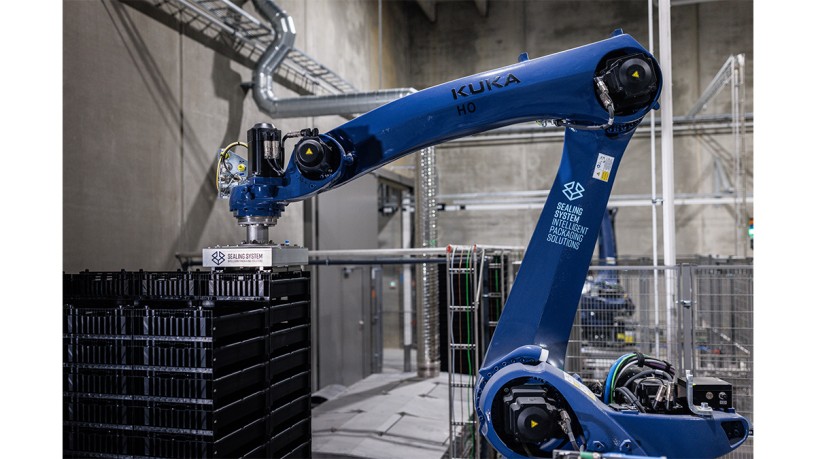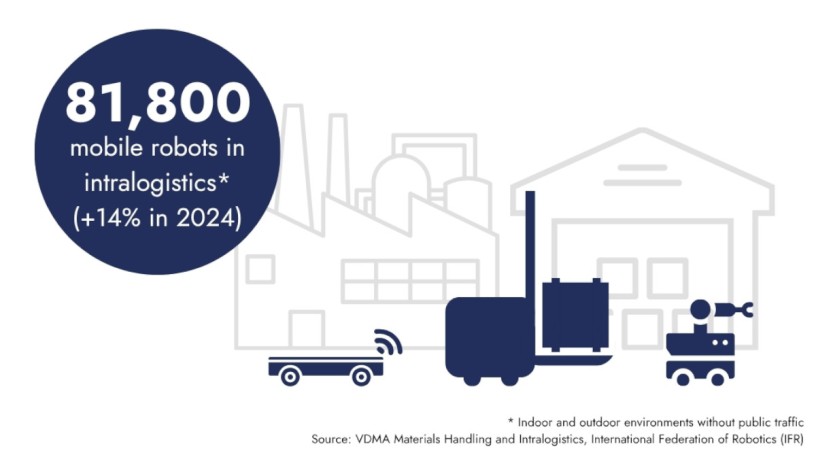Increasing Demand for Robot Solution
In diesem Artikel
The current DLG Trend Monitor is based on responses from a total of 65 German, Austrian and Swiss companies. In addition to large companies, small and medium-sized enterprises also participated in the online survey. Information was provided by managing directors (28 %); employees from quality management or quality assurance, hygiene and analytics (23 %) or production, manufacturing and technology (20 %).

Trendmonitor Robotik 2023
Importance on the increase
Robotic systems are becoming increasingly important in the food industry. At 49 %, about half of the respondents said they use robots in their processes. If companies already have robots, most are willing to continue investing in robots in the future. For most companies, the reasons for using robots are to improve working conditions, increase efficiency and save on personnel. These goals can be achieved by using robots, as they can perform heavy as well as monotonous work precisely and quickly without the need for additional personnel.
The other half of the companies surveyed did not own any robot technologies. Here, there was also less willingness to invest in robots in the future than among companies that use robots. The reasons for this are usually a lack of expertise or experience in the field, or the characteristics of the company's processes and systems.
Articulated-arm robots
In the food industry, articulated-arm robots (jointed-arm robots) are still mainly used. Thanks to their ability to move three-dimensionally, high load-bearing capacity and reach, they offer a broad range of possible applications. Due to their high speed but low payload, delta robots are mainly used for pick and place applications or also increasingly for packaging. Gantry robots are crane-like systems that are often used for palletising because of their high payload. The number of cooperating robots (cobots) and autonomously mobile robots (AMR) has increased considerably compared to the last DLG Trend Monitor in 2019/2020.
Tasks
The robots' tasks are mostly in logistics, but they are also increasingly being used in packaging and processing. With regard to the training of robot-operating personnel, it becomes apparent that employees with very different educational backgrounds have skills in using robots. In this context, companies place particular emphasis on knowledge of occupational health and safety, technology, food safety and legal guidelines.
Outlook
"Automation is indisputably an essential "part of the solution" with regard to the increasing labour shortage," says Prof. Matthias Weiß, spokesman of the DLG Working Group Robotics in Food Production. "New collaborative systems are constantly coming into view here. However, these often present themselves more as an interesting bridging technology until full automation is achieved. This is due to the extreme safety requirements and the tightly limited output, which cause the costs in the upper production range to rise unprofitably. It's a good thing that complex and autonomous complete systems offer excellent alternatives in terms of both cost and production. The basic know-how for the selection and operation of such solutions is not only available from all suppliers, but increasingly also from many users in the food sector. A trend monitor can be a statistical indication and motivation, but of course it cannot show all real efforts and relevant progress in detail.
The challenges for complex system planning, including the peripheral systems that now determine success and go far beyond the basic kinematics, are growing exponentially. However, the decision-making reliability required for this can be effectively supported by simulation and innovative calculation algorithms up to and including AI," says Prof. Weiß in conclusion.
DLG Working Group Robotics
The goal of the DLG Working Group Robotics in Food Production, founded in 2008, is to provide interdisciplinary and neutral information about the possibilities of using robots in the various sectors of the food and beverage industry.
The complete DLG Trend Monitor: Robots in the Food and Beverage Industry 2023 powered by Anuga FoodTec is available free of charge as a download at:
https://www.dlg.org/en/lebensmittel/themen/publikationen/trendmonitor/dlg-trend-monitor-2023




